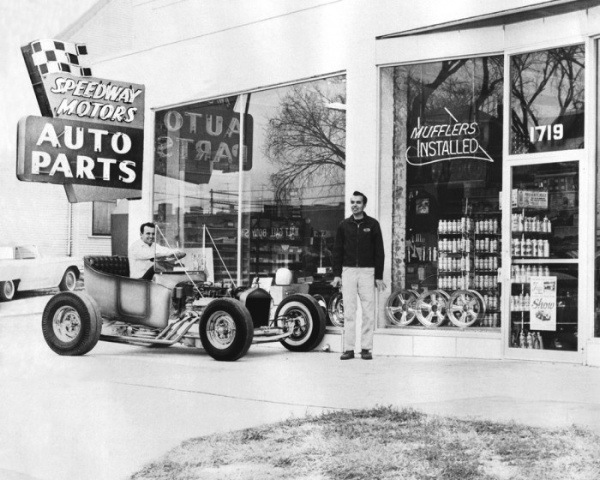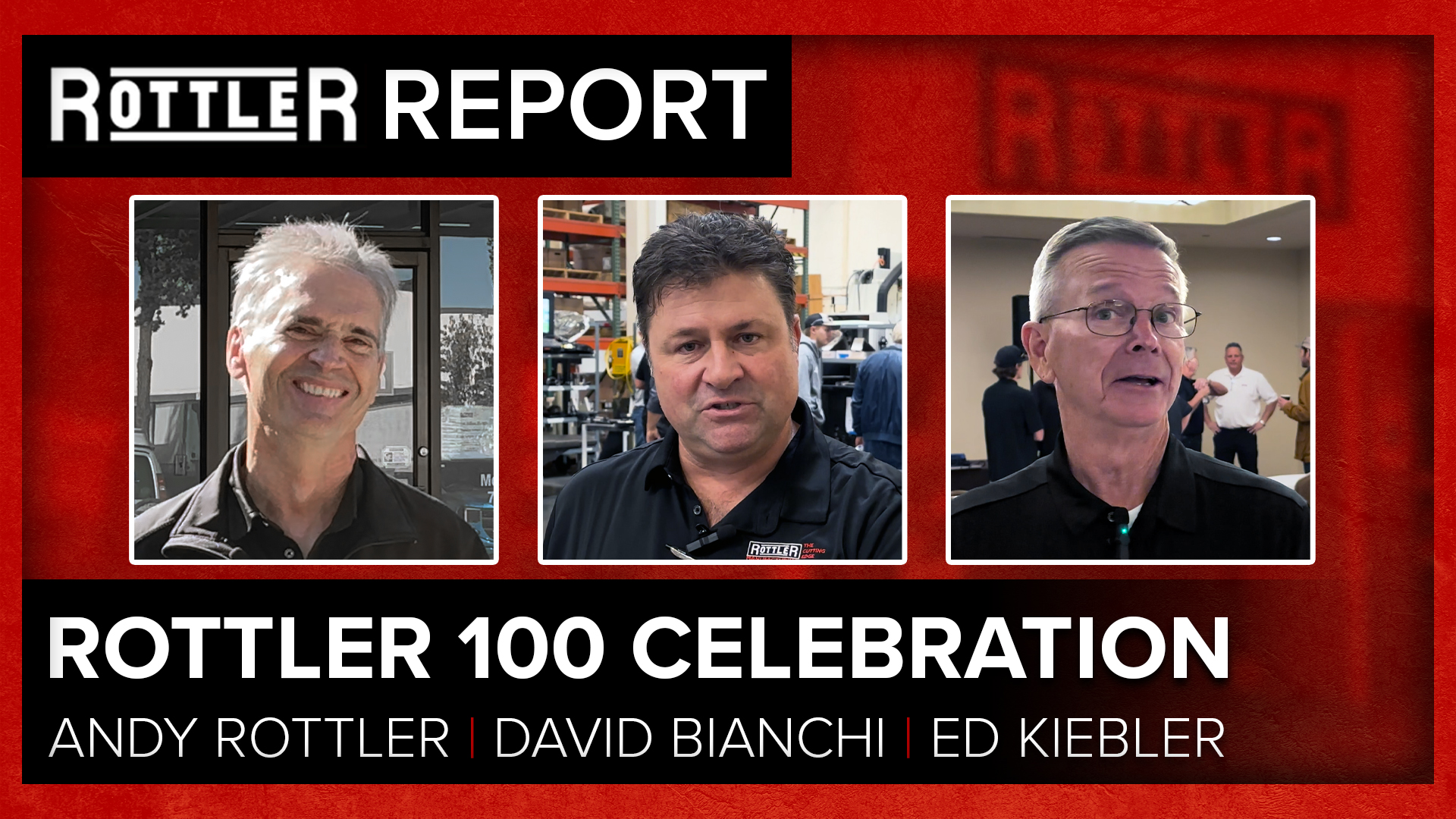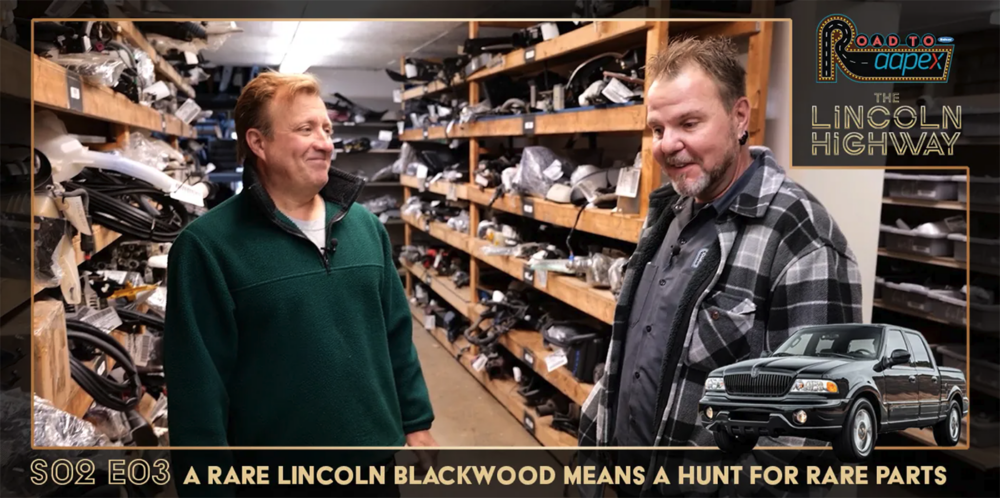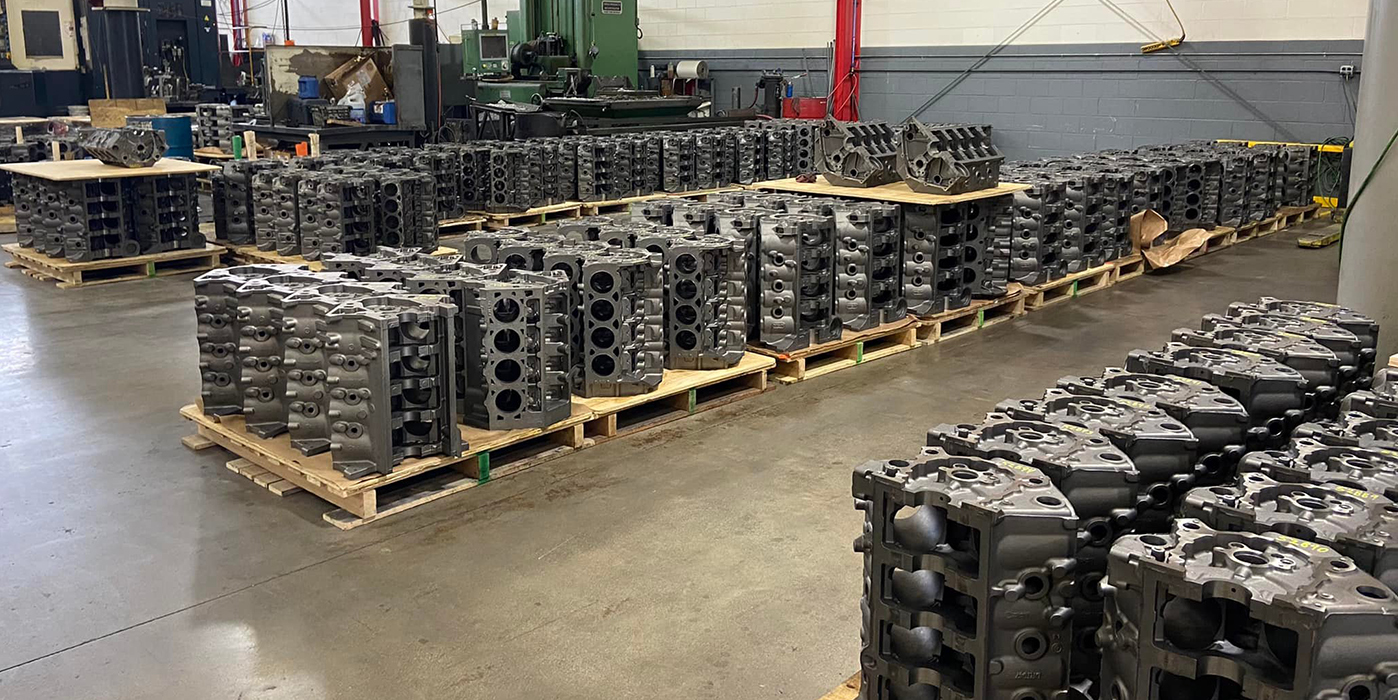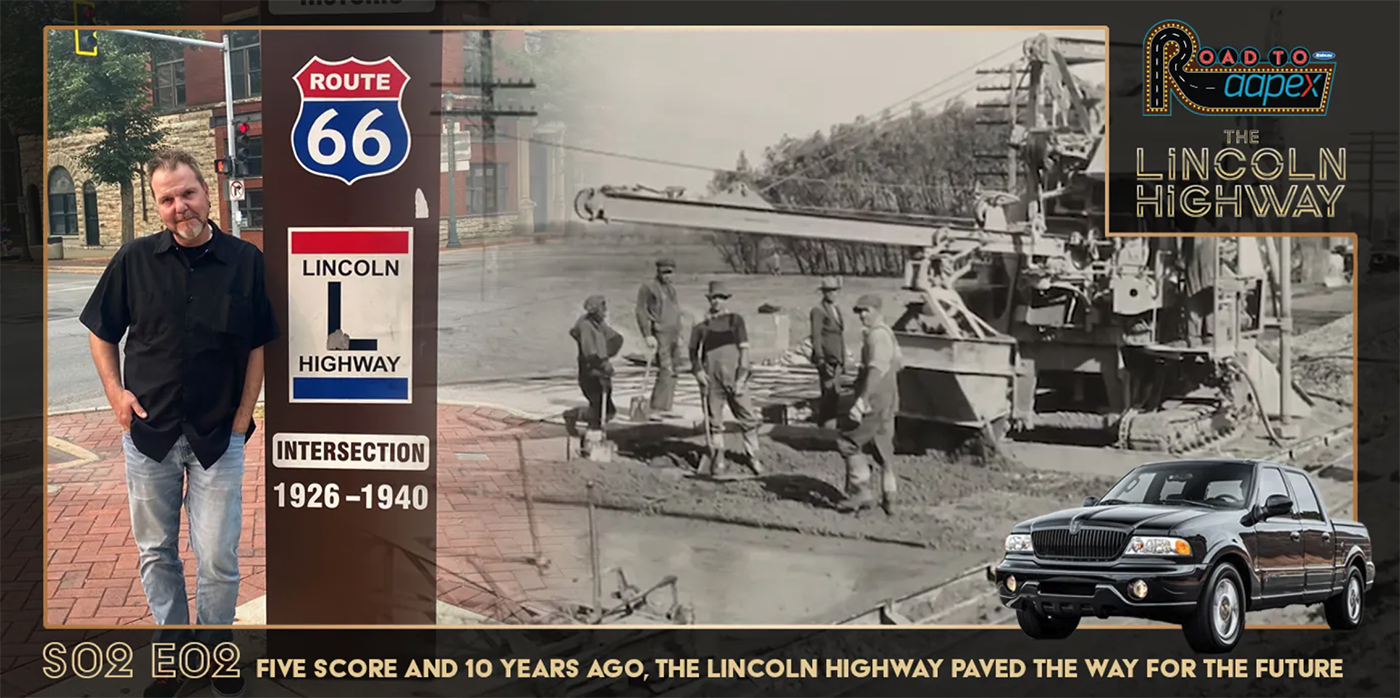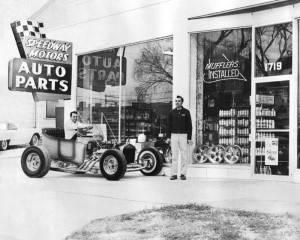
I met “Speedy” Bill Smith while on a magazine assignment for a former hot rodder magazine back in April of 1999. The magazine editor called early one Monday morning… “I know you only write technical articles for the magazine but we need somebody to go interview “Speedy” Bill Smith in Lincoln, Nebraska. You are the closest…see if you can pull this interview story off. He is your assignment and you have to call and make your own arrangements…good luck!”
I was terrified. Speedy Bill is a legacy and I figured the odds of getting into his office for an interview was going to be tough, especially for a no name automotive journalist…just another word hack…I could hear him now!
I called up Speedy’s office talked to his receptionist who asked me a dozen questions about who I was, who my editor was, and what exactly I wanted from Bill. I must have finally passed muster because the next thing I here is “Hello” in kind of a gruff voice. There was no doubt in my mind who was on the other end. It took less than 10 minutes to get on his schedule and after that he made it clear we were done and he hung up! Wow…what was I in for?
On interview day, I was there at his office 30 minutes early. It was a two and a half hour drive from my house to his office and I knew I could not afford to be late. At the appointed hour, he came walking down the hall buzzed me through the security doors and into his office.
I had made up a list of questions I wanted to ask him, so I started down my list. After about 15 minutes he looked me in the eye and asked…what do you really do for a living? That stopped me dead in my tracks! I paused…gathered my thoughts, and told him. I was a freelance automotive journalist and that I owned a company called Fifth Avenue Antique Auto Parts in Kansas.
I explained about my 6-volt alternators, cooling fans, electric fuel pumps, and the rest of the parts I make for antique vehicles including those entered in the Great Race. I explained that I wrote the technical articles for automotive magazines to explain how my “stuff” worked. After a pause he said… “I have heard of you and your company…”
He seemed generally interested and so the next 30 minutes, he interviewed me, about my background and how long I had been in business and who my customers were and my involvement in the Great Race.
I explained once again that I normally wrote technical articles for the automotive magazines and that I got assigned this job because I was closest to him! Then he looks at me square in the eye again and proceeds to tell me, “I knew you were not one of those ‘slickster’ California automotive journalist types. I knew right away you did not do this for a living.”
I got one of the best interviews with Speedy Bill that anyone has ever gotten. It went on for most of the day. He got out pictures of the early days, gave me a complete tour of the entire building and Museum of Speed and showed me prototypes of upcoming products and the plans for expansion of his Museum.
When I turned in my story to editor, he immediately called and demanded to know how I got an interview like that from Speedy Bill. “You have personal information and pictures in that story that he has never shared with anyone! I am more than impressed!” he said. When the story came out, it was in two parts with all of the early pictures and information nobody had ever captured before. I was more than proud of that story. When I received my copies, I drove up to Lincoln and hand delivered a copy to Speedy in person.
Typical Speedy, he began to read the article as soon as I handed it to him and said to “have a seat.” If things were not as he expected, it was clear to me I would be the first to know. He finished reading the article, looked up and said…”Good Article!” I was more than relieved!
From then on we became friends. I had proven myself to him and earned his respect. I had delivered just the story that I said I would and included the points he wanted. Something I later learned was very difficult to do. He later told me he seldom gave personal interviews because the magazine types “always screw it up and never get the facts right.” He said, “I thought I could trust you and I am a pretty good judge of character…”
“He later became a good customer of Fifth Avenue after six months of intense negotiations. As I look back now, I think he was trying to teach me some negotiating skills. I survived class, signed him up and I can now say I learned from one of the best. I have learned more about life and business from him than I could have ever imagined. He has also proven to be a good customer, but you’d better have your ducks in a row and not miss a delivery deadline. Luckily I never have but it hasn’t always been easy.
Now some dozen years later, we spoke on a weekly basis up until his death. I would call him or he would call me and I would go by the house to see him when I was delivering orders to the company.
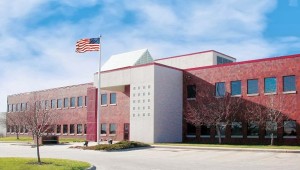
Of all the friends he has made in the past 60 years, I am honored to be on his short list.
Many of you know Speedy Bill and Speedway Motors for the Street Rod and Racing catalogs that have graced your mailbox for the past 60 years.
Here is part of my original interview about his early days; I hope you find it interesting.
This is in his own words…
Bill Smith was born in Lincoln, NE. His parents lived in a quaint house located at 4427 “O” Street in Lincoln. “O” Street is still considered the longest straight street in the country. “O” street stretches 50 miles east to the Missouri River and westward 40 miles, till it meets up with a corncrib. Needless, to say, if it was happening in Lincoln, it happened on “O” Street.
Bill got his first real job at age 13 working for “Milo” Kaslaskie who ran the second hand repair store, two blocks down from his house.
“Milo would pay me 15 cents an hour in cash, or 25 cents an hour if I would take it out in trade. Trading usually proved to be a better deal.”
Bill’s father worked for the Lincoln Telephone and Telegraph Company as an engineer. He was a hard working, dedicated and dependable employee, always arriving a half an hour before work started, and always arriving home at the same time each day, a trait Bill is also known for. “My mother was a homemaker. She and my father made every effort to ensure that I grew up an honest, hard working young man. There were rules in those early days. My dad got home from work at 5:15 p.m. every day and my mother had supper on the table at 5:30 p.m. I was expected to be there and never late… no excuses and no exceptions.”
Bill bought his first car from Milo when he was 14-years-old, a “slightly used” 1917 Ford Model T Roadster pickup. “I had it all figured out, I was going to get rich with that pickup. In those days people burned their trash in the alley behind their homes. Eventually they would end up with a huge pile of ashes. I figured I could make some good money hauling those ashes to the city dump. My plans were to charge a dollar a load. Needless, to say, I did not get rich.”
Bill applied for, and received his social security card, when he was just 8 years old. Bill says, “I went down with an older friend of mine to sign up. He had to lift me up so I could see over the counter. When our cards arrived, we were one number apart.”
Graduating from cars to motorcycles, Bill bought an old 45-cubic inch Indian motorcycle when he was 17 years old. The passion for speed was in his blood. “That old Indian ran good, but was not near fast enough, so I traded it for an 80-cubic inch Indian motorcycle.
“That 80 cubic inch motorcycle was fast, it would easily run 100 mph in fourth gear. I would pull up next to a car on the highway in third gear… egg them on a little, shift into fourth, and leave them in the dust. Most cars in those days would seldom run over 85 mph.
“I raced motorcycle flat track for a few years, and was pretty good at it, in part because I only weighed 125 pounds dripping wet. I also did not take any unnecessary risks because I knew if I came home with a broken arm or broken leg, that I would also end up with a broken head via my mother. That fear also helped me to decide cars were safer than motorcycles. Later, on I figured out I was a better mechanic and car builder than I was a driver.
“I did race on the streets a little in those days, and while I could easily outrun the cops, my mother, was a different story. I was taught early on, never to lie, steal, or do anything dishonest. If my mother asked what I had been doing I had no choice but to tell her. My expression usually told the story.”
Bill also raced cars for money during those early years. “One of my early racecars was a Ford Model A Roadster A-V8, (Model A car with a Flathead V8 engine installed) which I towed to the races with a rope, often to races over 100 miles away. I always convinced a local 14 year-old neighborhood kid to “steer” the car.
“In Nebraska, you had to be 16 years of age to drive, I often wondered how old you had to be to just “steer” a car down the highway? We never got pulled over, so I never found out.”
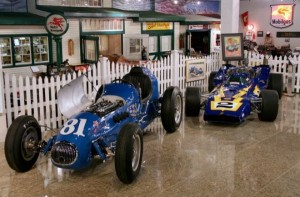
His passion for building cars, building engines and racing was intense. Many times there was only enough money in his pocket to get to a race, and pay the entry fee. If he did not win any money, he would stay late and pick up Coke bottles from the infield and turn them in at two cents each, to make enough gas money for the trip home. To put this in perspective at two cents a bottle it took about 50 bottles to buy five gallons of gas, enough to get home.
The Beginning of Speedway Motors…
Bill started Speedway Motors in 1952 at the age of 23 after graduating from college, and getting married to his sweetheart Joyce. Speedway Motors “officially” began (with a $300 loan from Joyce) in a 20′ x 20’ cement block building (that once served as a soda pop stand) located at 2232 “O” Street in downtown Lincoln. (Today, that address is an empty lot).
“Times were difficult. Sometimes it would be two or three weeks between customers. I did a lot of porting and polishing of cylinder heads in those days… that was about all I had room for in that small shop.
“I also installed a lot of headers and dual exhaust systems in my dad’s garage at home. Fords were quite popular then and one set of headers and a pair of “Smithy” mufflers would fit most any of the Ford cars built from 1932 up through 1953.
“Aaron Fenton (who’s real name is Aaron Finkelestein by the way) also grew up here in Lincoln. Aaron left to attend college in California after graduating high school. Aaron’s brother Benny owned an auto store called “Ben’s Auto Parts,” just two blocks down from my speed shop. Aaron, as you know, got into making “Fenton Equipment” and he was selling to me. I was doing quite well because I could show the customer how to install the parts or would install them for a little extra.
“Benny watched what I was doing, and decided he wanted in on the action. He ordered a train carload of product from his brother in California and proceeded to sell it at 40 percent less than my cost. I nearly starved. People would buy the stuff from Benny, and then come ask me how to install it. Talk about tough competition that was it, I had no other income!
“I held out, and Benny’s sales eventually dropped off. Aaron called one day and said… Benny was sending his remaining inventory back and did I want to buy it? I said I would give 10 cents on the dollar. Aaron says, “You’re trying to kill me…” I said, “You have been trying to kill me for the last year and a half.
“I bought the inventory out and did ok after that,” Smith said. “It was Aaron Fenton and Vic Edelbrock that were the first to make a million dollars in the performance aftermarket business.”
By 1955, Speedway Motors had expanded to a 50 x 125 sq. foot shop and had nine employees. “We were doing engine swaps, averaging three-four a week. We could make anything we needed. We designed our own motor mounts, transmission mounts, shifter brackets, etc. We could put any engine in any car. I was also the first shop in the state of Nebraska to own a Stewart Warner engine balancing machine. By then I had also expanded the business into building complete racing motors. I built all types of racing engines, but especially Flatheads.”
The Origins of Mail Order
“In the 1960’s I started running ads in “Hot Rod” Magazine. The ads had no zip code or telephone number. I had to ship everything via Greyhound Bus, because there was no UPS service in Nebraska until the 1970s.
“I remember I once shipped a complete Pontiac Engine to Des Moines Iowa via the bus. When I arrived at the local bus depot they said “we” are not loading “that” on a bus! I said, OK, fine, I will do it myself, and I did.
“I loaded all of my freight onto the bus myself in those days… and did most of the bus company’s paperwork as well. The local bus company employees had little interest in my freight business. It is much different at Speedway Motors today. We process over 2,000 orders each day, and will completely fill three UPS semi-trucks daily. We still maintain a 99.6 percent fill rate, something I am quite proud of.”
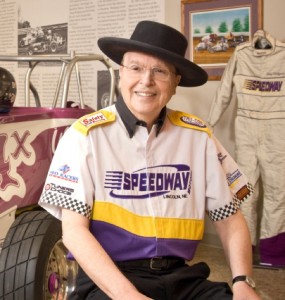
Those Famous Trademark Hats
Like many people, I wondered what the story was behind Bill’s famous trademark hats. Bill explained… “When I built and campaigned USAC Championship cars in the early ‘70s, I felt there needed to be some rule changes so I campaigned to get a seat on the board of directors. As I campaigned, people could not remember my name or keep me straight from anyone else. Somebody told me I needed to get a trademark so I could be easily recognized.
“So I went to see “Manny the Hatter” in Austin, Texas. My first hat cost $75 in the early 1970s. Today, the same hat costs $450. I have been through 20 hats in 30 years. The hats have become my trademark. Not many people recognize me without my hat on.”
The Innovations
Speedway Motors started building fiberglass bodies for racecars way back in 1955, long before anybody else even thought of the idea. In the 1960s, Speedway Motors introduced their now-famous fiberglass T-Bucket kit. Speedway Motors shipped at least one T-Bucket kit every week for over 20 years. Speedway Motors was also the first to offer the 1934 Chevy Roadster Body in Fiberglass.
In recent years with the introduction of their 1934 Ford Club Cab Pickup, the innovations have continued. “I have always believed in the importance of offering a kit car program at a reasonable cost. This allows the entry-level customer a chance to build a car and be involved in the hobby without spending a fortune…”
I remember getting Speedway Catalogs in the mail during my high school years…seems everybody was on the mailing list. Those catalogs were like a Christmas wish book.
After I toured behind the scenes and saw what it takes to fill 2,000 orders a day (with just 125 employees) it is truly an eye opening experience. Speedway Motors has been in business since 1952 and has out lasted most all of its competition. When you see the big picture it becomes crystal clear why Speedway has not only survived, but also has remained at the top of its game.
As Speedy reminded me at the end of every conversation… “You have to keep the pedal mashed down and ‘“pushing against the back of the radiator if you want to stay ahead of the game…” My reply to him was … “If I can see your taillight go over the hill now and then, I know I am following the right path.” That always seems to make him laugh a little and he would say…”keep up the good work!” Then I knew we were done till next time.
I will miss him greatly, but I know in my heart that he still has the pedal “mashed down and touching the back of that radiator” even in the after life. Godspeed, Speedy.

